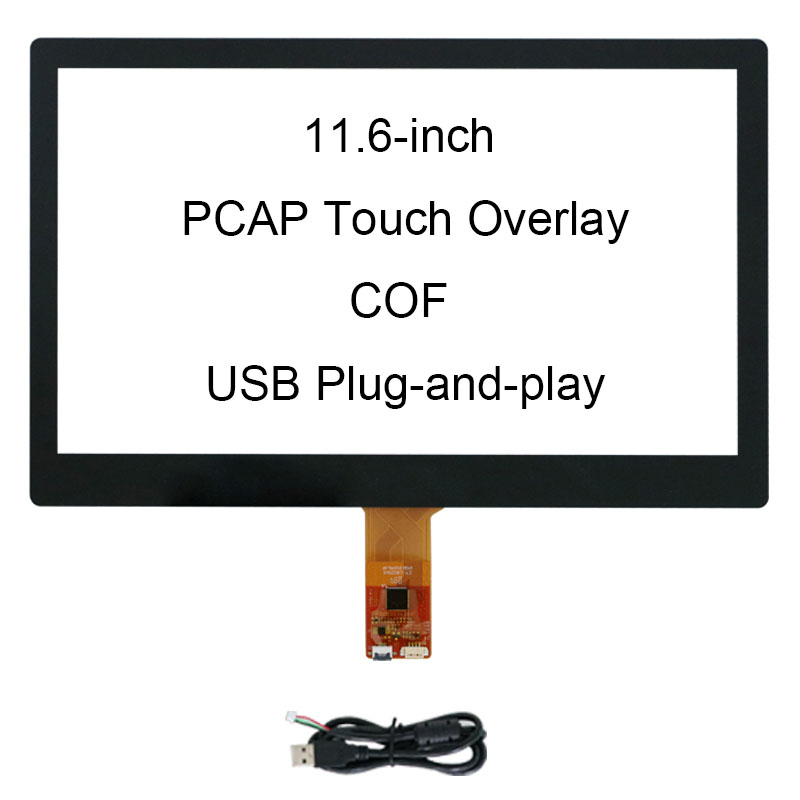In the realm of modern technology, capacitive touch displays have become ubiquitous, powering our smartphones, tablets, laptops, ATMs, and a host of other devices. These displays offer a user-friendly interface, allowing us to interact with our devices effortlessly. But how do capacitive touch displays work, and what makes them so essential in today's digital landscape? Let's explore the technology behind capacitive touch displays.
Understanding Capacitance
To comprehend capacitive touch displays, it's crucial to grasp the concept of capacitance. Capacitance is a fundamental property of electrical circuits that measures an object's ability to store electrical charge. It depends on the shape, size, and material of the object.
In capacitive touch displays, the fundamental element is a capacitor. A capacitor consists of two conductive plates separated by an insulator. When voltage is applied to these plates, they store an electrical charge, creating an electric field between them. The capacitance of the capacitor is directly proportional to the surface area of the plates and inversely proportional to the distance between them.
Types of Capacitive Touch Displays
There are two primary types of capacitive touch displays: surface capacitive and projected capacitive.
Surface Capacitive: Surface capacitive displays are the older of the two technologies and have been largely replaced by projected capacitive displays in modern devices. In surface capacitive displays, a single layer of capacitive material is placed on the glass surface of the screen. When you touch the screen, your finger disrupts the electrostatic field, causing a change in capacitance that the screen detects as a touch input. Surface capacitive displays are less common today but are still used in some industrial and commercial applications.

Projected Capacitive: Projected capacitive displays, often referred to as "multi-touch" screens, are the prevalent choice in today's consumer electronics. They consist of multiple layers of capacitive material stacked on top of each other. Each layer has a grid of electrodes. When you touch the screen, the layers detect the change in capacitance at the point of contact and pinpoint the exact location of the touch. Projected capacitive displays can recognize multiple touch points simultaneously, enabling gestures like pinching, zooming, and swiping.
How Projected Capacitive Touch Displays Work
Projected capacitive touch displays are the foundation of most modern touchscreen devices. Here's how they work:
Multi-Layer Stack: A typical projected capacitive display consists of two layers of glass or a glass and plastic combination, with a capacitive grid of electrodes on each layer. The layers are separated by a thin insulating layer that keeps them from making direct contact.
Electrodes and Electrostatic Fields: An array of transparent electrodes is embedded in the top layer, and another set of electrodes is embedded in the bottom layer. When an electrical current flows through these electrodes, they create an electrostatic field between them.
Touch Detection: When you touch the screen with your finger (or a conductive stylus), it disrupts the electrostatic field. The capacitive effect at the point of touch changes, and this change is detected by the grid of electrodes in both layers. The system precisely calculates the location and registers the touch input.
Multi-Touch Capabilities: Projected capacitive displays can detect multiple touch points simultaneously. Advanced algorithms interpret the positions of multiple touches, allowing for gestures like pinch-to-zoom, two-finger scrolling, and rotating.
Controller and Interface: The touch data is processed by a controller, which communicates with the device's operating system to execute the desired actions. The controller translates the touch coordinates into specific commands and responds accordingly.
Durability and Reliability: Projected capacitive displays are known for their durability and reliability. They are resistant to wear and tear, making them suitable for devices that require frequent touch interactions.
Applications of Capacitive Touch Panel
Capacitive touch displays have a wide range of applications across various industries:
Smartphones and Tablets: These devices rely heavily on capacitive touch displays for user interaction.
Laptops and Desktop Monitors: Many laptops and computer monitors feature touchscreens for enhanced usability.
ATMs and Kiosks: Self-service machines often use capacitive touch displays for user-friendly interfaces.
Gaming Consoles: Modern gaming consoles use capacitive touch controls for intuitive gaming experiences.
Point-of-Sale (POS) Systems: Capacitive touchscreens are common in retail environments for quick and accurate transactions.
Automotive Displays: Capacitive touchscreens are increasingly integrated into vehicle infotainment systems and navigation interfaces.
Medical Devices: Medical equipment often incorporates capacitive touchscreens for hygienic and precise input.
Conclusion: The Seamless Interaction Experience
Capacitive touch displays have revolutionized how we interact with technology. Their precision, responsiveness, and ability to detect multiple touch points have transformed user interfaces across a wide range of devices. As technology continues to evolve, Yunshang capacitive touch displays remain at the forefront, enhancing our digital experiences and making interactions with devices more intuitive and enjoyable.

Comments
0